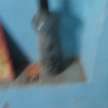
Introduction
What is it about fire that captivates us so? Perhaps it's the warmth and comfort it provides on a cold winter's night, or the excitement and danger of watching flames dance and flicker. Whatever the reason, fire has held a powerful fascination for humans throughout history. But have you ever stopped to think about the science behind this elemental force? How does fire work, exactly, and why does it behave the way it does?
In this article, we're going to explore the science of fire and shed some light on its mysterious ways. We'll delve into topics such as the combustion process, the different types of flames, and the role of heat and oxygen. And we'll do it all with a healthy dose of humor, because let's face it, fire can be pretty funny sometimes (just ask anyone who's ever tried to start a campfire with damp wood).
So, get ready to learn some cool science facts and laugh at some silly fire jokes along the way. Whether you're a pyromaniac at heart or just curious about how this ancient force works, you're sure to come away with a newfound appreciation for the magic of fire. So, grab a seat by the hearth (or, you know, just imagine one), and let's explore the science of fire together!
The Combustion Process
At its most basic level, the combustion process is all about chemistry. When you strike a match or flick a lighter, you're setting off a chain reaction that transforms the fuel you're burning into new substances, releasing energy in the process. But how exactly does this reaction work, and what are the key factors that determine whether a flame will ignite or sputter out?
First things first: the combustion process requires three key components, known as the fire triangle: heat, fuel, and oxygen. Without these three elements, a fire simply can't exist. The heat source provides the initial spark that gets the reaction going, while the fuel - whether it's wood, gasoline, or a marshmallow - provides the substance that will be transformed by the reaction. And the oxygen, of course, is necessary to sustain the chemical reaction that produces the flames.
So, let's say you've got your heat source, your fuel, and your oxygen all lined up. What happens next? Well, it all comes down to the chemical reaction that occurs when these three elements combine. Essentially, the heat from the initial spark breaks apart the molecules in the fuel, creating a cloud of vapor that mixes with the surrounding oxygen. When the vapor and oxygen are heated to a high enough temperature, they react with one another, producing new substances such as carbon dioxide, water vapor, and various other gases. This chemical reaction releases energy in the form of heat and light, which we perceive as a flame.
Of course, not all fires are created equal. Factors such as the type of fuel being burned, the amount of oxygen present, and the temperature of the heat source can all affect the behavior of a flame. A well-ventilated flame, for example, may burn more brightly and cleanly than one in an enclosed space with limited oxygen. And a flame fueled by a high-octane substance like gasoline will burn much hotter and more explosively than one fed by a simple wood fire.
So, there you have it: the combustion process in a nutshell. Next time you light a candle or start up the grill, take a moment to appreciate the complex chemistry that's going on behind the scenes. And who knows, you might even impress your friends with your newfound knowledge of the fire triangle!
Types of Flames
When you think of fire, you might imagine a bright, crackling flame that illuminates the night sky. But did you know that there are actually several different types of flames, each with its own unique characteristics and behaviors? Let's take a closer look at some of the most common types of flames and what makes them different.
First up, there's the diffusion flame. This type of flame is the result of a fuel mixing with oxygen in a slow, controlled manner. Diffusion flames tend to burn steadily and with a blue, flickering flame. Think of a gas stove burner or the pilot light on a water heater - those are both examples of diffusion flames.
Next, we have premixed flames. This type of flame occurs when fuel and oxygen are mixed together before they enter the combustion chamber. Because the fuel and oxygen are already mixed, the flame tends to be more stable and uniform, with a brighter, more intense glow. You might see premixed flames in a gas grill or a propane torch.
Then there are flames that result from burning liquid fuels. These flames tend to be more complex than diffusion or premixed flames because the fuel is evaporating as it burns. This can lead to flickering or uneven flames, as well as a lot of soot and smoke. Liquid fuel flames can be seen in candles, oil lamps, and even car engines.
Finally, we have flames that occur when solid fuels are burned. These flames tend to be the least controlled and most unpredictable of all. Think of a bonfire or a fireplace, where you're burning logs or other organic materials. These flames can be beautiful and mesmerizing, but they can also be dangerous if not carefully monitored.
So, there you have it: the different types of flames you might encounter in your everyday life. Next time you're gathered around a campfire or flipping burgers on the grill, see if you can identify what type of flame you're dealing with. And remember, whether you're dealing with a diffusion flame or a roaring bonfire, always handle fire with care!






Comments
There are no comments for this story
Be the first to respond and start the conversation.